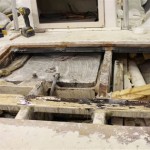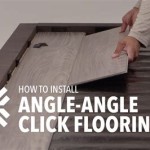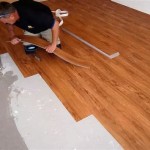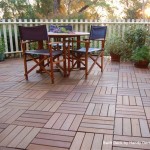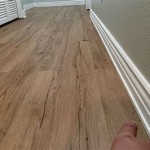Best Knee Pads for Hardwood Flooring Installation
Installing hardwood flooring is a physically demanding task that requires prolonged periods of kneeling. Without adequate protection, this can lead to significant knee pain, discomfort, and long-term joint problems. Investing in a high-quality pair of knee pads specifically designed for this type of work is essential for protecting the knees and maintaining productivity. This article explores the key features to consider when selecting the best knee pads for hardwood flooring installation, and examines several top-rated options available on the market.
Understanding the Importance of Knee Protection During Flooring Installation
The repetitive and sustained pressure on the knees during hardwood flooring installation can lead to several health issues. Bursitis, the inflammation of the bursae (fluid-filled sacs that cushion the joints), is a common complaint. Chronic knee pain, arthritis, and meniscus tears can also develop over time. Choosing the right knee pads provides a crucial barrier of protection, distributing weight evenly and cushioning the knees against the hard surface. Adequate knee protection can greatly reduce the risk of these joint-related ailments, ensuring a longer, healthier, and more productive work life.
Furthermore, comfort plays a vital role. Uncomfortable knee pads can distract from the task at hand, leading to decreased focus and potentially impacting the quality of the flooring installation. The best knee pads offer a balance of protection and comfort, allowing the installer to work efficiently and without unnecessary discomfort.
Key Features to Consider When Choosing Knee Pads
Selecting the right knee pads involves assessing several features to ensure they meet the specific demands of hardwood flooring installation. These features include the material, design, cushioning, adjustability, and durability.
Material: Knee pads are typically made from materials such as gel, foam, rubber, or a combination of these. Gel-filled knee pads offer excellent cushioning and conform to the shape of the knee, providing superior comfort for extended periods. Foam knee pads are lightweight and more affordable but may not offer the same level of support as gel options. Rubber knee pads are durable and resistant to abrasion, but can be less comfortable for prolonged use. Hybrid designs that combine these materials can offer a balance of comfort, protection, and durability.
Design: The design of the knee pad significantly impacts its functionality and comfort. Some knee pads feature a hard shell exterior for added protection against sharp objects and debris, while others have a softer, more flexible design for greater freedom of movement. Consider the specific types of flooring installation work you'll be performing and choose a design that provides the appropriate level of protection and flexibility. Knee pads with a wide, flat base offer greater stability and prevent the knees from rolling, which is particularly important when working on uneven surfaces.
Cushioning: Adequate cushioning is vital for absorbing impact and reducing pressure on the knees. The thickness and density of the cushioning material determine the level of protection provided. Look for knee pads with thick, high-density foam or gel padding that can effectively absorb shocks and distribute weight evenly. Contoured designs that cradle the knee and provide support in key areas can enhance comfort and protection.
Adjustability: Knee pads should be adjustable to ensure a snug and secure fit. Straps that are too loose can cause the knee pads to slip and slide, while straps that are too tight can restrict circulation and cause discomfort. Look for knee pads with adjustable straps that can be easily tightened or loosened to accommodate different leg sizes and shapes. Wide straps with secure closures, such as hook-and-loop fasteners or buckles, provide a more stable and comfortable fit.
Durability: Hardwood flooring installation can be a demanding job, so it's important to choose knee pads that are built to last. Look for knee pads made from durable materials that can withstand abrasion, impact, and repeated use. Reinforced stitching and durable hardware can also extend the lifespan of the knee pads. Consider the type of environment in which you'll be working and choose knee pads that are specifically designed for those conditions. For example, if you'll be working on rough or abrasive surfaces, look for knee pads with a rugged exterior and reinforced construction.
Reviewing Top Knee Pad Options for Hardwood Flooring Installation
The market offers a wide variety of knee pads, each with its own unique features and benefits. A close examination of some of the best options can help make a well-informed decision.
KP Industries Pro Knee Pads: These knee pads are highly regarded for their exceptional comfort and durability. They feature a thick gel padding that conforms to the shape of the knee, providing excellent cushioning and support. The wide, adjustable straps ensure a secure and comfortable fit, while the non-slip surface prevents the knee pads from sliding on smooth floors. They are designed for all-day wear and are suitable for a wide range of flooring installation tasks.
ToughBuilt GelFit Fanatic Knee Pads: These knee pads are designed with a unique pivoting design that allows for greater freedom of movement. They feature a durable, non-slip shell and a thick gel padding that provides excellent cushioning and support. The adjustable straps are designed to stay in place, even during strenuous activity. The ToughBuilt GelFit Fanatic Knee Pads are a popular choice among flooring installers who need to move freely while maintaining adequate knee protection.
Dewalt DG5204 Professional Kneepads: Known for their rugged construction and superior protection, these knee pads feature a durable, hard shell exterior that can withstand the rigors of the job site. The gel and foam padding provides excellent cushioning and support, while the adjustable straps ensure a comfortable and secure fit. The non-slip surface prevents the knee pads from sliding on various surfaces. The Dewalt DG5204 are a reliable choice for installers working in demanding environments.
Sellstrom S94100 Ergonomic Knee Pads: These knee pads are designed with ergonomics in mind, offering a comfortable and supportive fit that minimizes strain on the knees. They feature a contoured design that cradles the knee and provides support in key areas. The gel and foam padding provides excellent cushioning, while the adjustable straps ensure a secure fit. These knee pads are lightweight and flexible, allowing for greater freedom of movement. The Sellstrom S94100 Ergonomic Knee Pads are a good option for installers who prioritize comfort and mobility.
ProJoint Professional Knee Pads: Designed specifically for flooring professionals, these knee pads incorporate a combination of gel and high-density foam for optimal comfort and protection. The durable outer shell provides stability and resists wear and tear. The adjustable straps ensure a snug, custom fit. These knee pads strike a balance between comfort, durability, and functionality.
Proper Maintenance and Care of Knee Pads
Proper maintenance and care are essential for extending the lifespan of knee pads and ensuring they continue to provide adequate protection. Follow these guidelines to keep knee pads in good condition:
Cleaning: Regularly clean knee pads to remove dirt, debris, and sweat. Use a mild soap and water solution to clean the surface of the knee pads. Avoid using harsh chemicals or abrasive cleaners, as these can damage the materials. Rinse the knee pads thoroughly with clean water and allow them to air dry completely before storing them.
Storage: Store knee pads in a cool, dry place away from direct sunlight and extreme temperatures. Avoid storing them in a compressed or folded position, as this can damage the padding and straps. Consider using a storage bag or container to protect them from dust and debris.
Inspection: Regularly inspect knee pads for signs of wear and tear, such as cracks, tears, or loose straps. Replace knee pads if they are damaged or worn out, as they may no longer provide adequate protection. Pay close attention to the stitching and hardware, ensuring that they are in good condition.
Replacement: The lifespan of knee pads depends on the frequency and intensity of use. Replace knee pads when they show signs of significant wear and tear or when they no longer provide adequate cushioning and support. Consider replacing knee pads every 6-12 months, depending on the workload. Always prioritize safety and replace knee pads proactively to avoid potential injuries.

Toughbuilt Gelfit Fanatic Knee Pads Wood Floor Business

Best Kneepads For Flooring 2024

Professional Knee Pads Wear Resistance Slip For Working On Concrete Hardwood Floors Construction Work Welding Gardening Cleaning Com

The Best Knee Pads For Flooring Offer Many Benefits Panel Town Floors

The Best Knee Pads For Protection At Job Sites Bob Vila

Professional Knee Pads Wear Resistance Slip For Working On Concrete Hardwood Floors Construction Work Welding Gardening Cleaning Com

Best Knee Pads 2024 Top Rated Reviews

The Best Knee Pads For Protection At Job Sites Bob Vila

Toughbuilt Gelfit Fanatic Knee Pads Wood Floor Business

Top 5 Best Knee Pads For Flooring Review In 2024 Comfortable Adjustable Ultimate Stability
Related Posts


